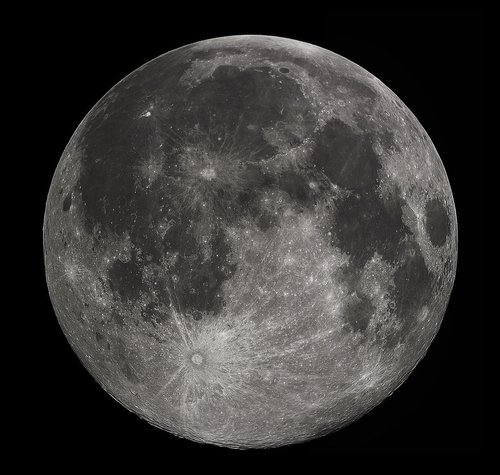Current Info for Observer
as of 04/26/2024 12:43 p.m.
Please login to view current observation details
General Info
as of 04/26/2024 12:43 p.m.
| Type | Moon |
| Constellation | Scorpius |
| Orbits | Earth |
| Right ascension | 16:12:44.10 (Hours) |
| Declination | -25:15:37.9 (Deg) |
| % illuminated | 93.621 |
| Mass | 7.3477e+22 kg |
Earth's only natural satellite | |
☉ Solar Masses ⊕ Earth Masses j Jupiter Masses
Skyview Pro 120mm EQ
100 points
It is our moon, nuff' said.
LS-8 SC
100 points
Celestron Nexstar 6SE
0 points
Tested new Neximage camera on the moon. Really cool!
Celestron Nexstar 6SE
100 points
Tested new Neximage camera on the moon. Really cool!
Jason 304 T 60 mm f/10
100 points
21:00 Turning the Telescop on the Crescent Moon produced a most Astonishing Apparition. The Moon filled the entire Field of View almost exactly. The Dark Aspect of the Moon was clearly visible, and the Markings thereon were clearly the Same as seen when the Moon is Full. Turning my Attention to the Bright Aspect of the Moon I was struck – Almighty God Preserve Us All !! – by the Incredible Variety of Structures visible on the Surface of the Moon! Round Saucer-like Depressions ringed by Elevated Ridges and of Infinite Variety of Sizes were Scattered all over the Surface. Mountain Ranges and Lines of Indeterminant Structure were seen, along with the Dark and Smooth areas known as Mare (except where Marked by some of the more Isolated Structures just mentioned) produced a varied terrain. The Structures present on the Mare clearly indicate that the Mare are not, in fact Seas, but are Broad Flat Plains, not Unlike some on Earth. All this Variety indicates that the Surface of the Moon is Not Smooth, and hence the Moon is Not a Perfect Sphere, again Contrary to the Teachings of Natural Philosophy.
Note: An Additional Handicap that I imposed on myself was to Mount the Telescop on a Simple Tripod, with an Improvised Mounting System that was quite Unstable and required Considerable Effort to Guess where the Instrument would be Pointed once I removed my Hands from it.
Generate a finder chart
The following form will generate a PDF finder chart suitable for printing using to locate objects in the sky with your telescope!
The Date is only really useful for solar system objects, as deep space objects move measurably only on a galactic timescale.
The larger the F.O.V (field of view), the more "zoomed out" the object will appear. It can be helpful to print several charts of the same object with different field of views.
Limiting the magnitude (remember, lower magnitude means brighter!) of stars and objects can make sure your chart is not cluttered with dim objects that you may not be visible to you anyway. The defaults are good, but try experimenting with raising and lowering the values.
Please login to post comments
